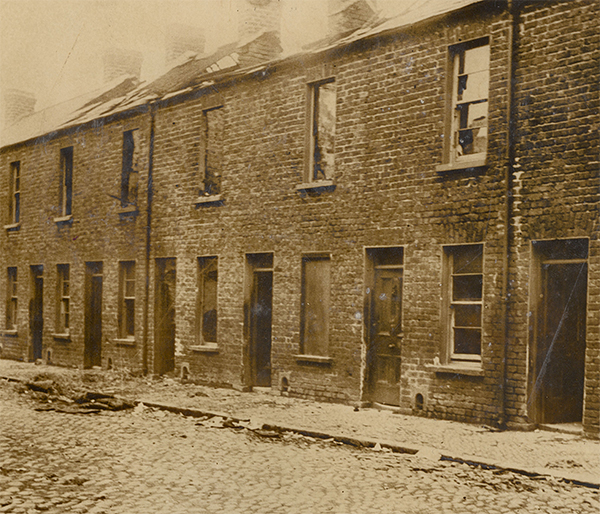Pogrom?
Published in Issue 1 (January/February 2021), Letters, Volume 29Sir,—Jeffrey Dudgeon describes as ‘fallacious’ (HI 28.6, Nov./Dec. 2020, letters) my and Fr John Hassan’s use of the word ‘pogrom’ to describe the events of 1920–22 in Belfast (‘Facts and fallacies of the Belfast pogrom’, HI 28.5, Sept./Oct. 2020) and he calls for context and definition.
The context consists of three overlapping developments that, by mid-1920, threatened to undermine the position of the unionist establishment. The first was the prospect that increasing labour militancy on the part of the Protestant working class would weaken the cohesion of the unionist all-class alliance—this militancy had been seen most notably in the Belfast engineering strike of 1919. The second was a series of victories for both labour and nationalist candidates in the urban and rural local elections of January and June 1920 respectively—in particular, the capture of Derry Corporation by an alliance of nationalists and republicans. The third was that the northern IRA had begun to play a more active role in the War of Independence in the first half of 1920, including the mounting of attacks on RIC barracks in various towns across the north. So, the context was increasing unionist alarm.
Instead of definition, Dudgeon offers a translation of the Russian word ‘pogrom’—‘to wreak havoc and destroy’. In some respects, what happened in Belfast does not correspond with dictionary definitions of the word, not least because the initial violence of July 1920 was not solely aimed at Catholics/nationalists but also targeted ‘rotten Prods’—the socialists and trade unionists who had been prominent in the previous year’s strike. But the simplest and most compelling definition of ‘pogrom’ is the one used by Belfast nationalists at the time: that which was being done to them.

Above: Catholic homes looted and burnt out on Antigua Street, Ardoyne, Belfast, following rioting in April 1922. (Kilmainham Gaol Museum)
Addressing the disproportionate number of fatalities suffered by the city’s minority nationalist population, Dudgeon states that ‘it could crudely be expected that the bigger population would inflict a higher number of casualties on the lesser’. But the loyalists of Belfast had more on their side than simple numerical superiority. They had political support, being incited by Carson (‘I hate words without action’) and encouraged by Craig (‘Do I approve of the action you boys have taken in the past? … I say “Yes”’). They were armed by the government, put into uniform and called Special Constables. They were abetted by rogue police officers who carried out reprisal murders, acting with impunity because they knew they had immunity. Faced with all this, it could equally crudely be expected that the lesser population would have suffered even more casualties than they actually did.
But Dudgeon references the number of RIC, RUC and USC officers killed—33 in Belfast—and describes this as ‘a minority response unheard of in Russian pogroms’. However, the nature or characterisation of a pogrom lies in the actions of its perpetrators, not in the reactions of its intended victims. If those targeted resist effectively, this does not make it a non-pogrom—it makes it an unsuccessful pogrom.
Sadly for the nationalists of Belfast, after workplace expulsions had been followed by two years of sectarian violence, which was predominantly directed at rather than by them, their resistance had been crushed by the summer of 1922.—Yours etc.,
KIERAN GLENNON
















